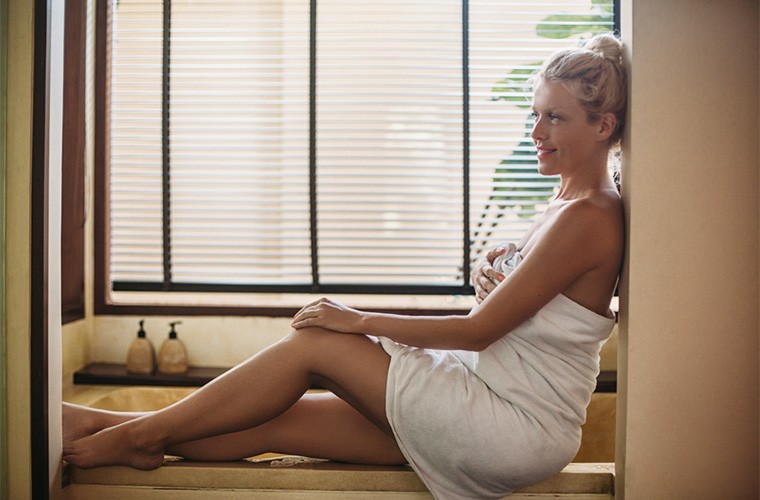Not surprisingly, many spas and salons market them as a safer alternative to sunning (or tanning beds). But then these spas don't provide a list of ingredients for what’s in a spray tan. So how do you know what your skin is soaking up? We set out to determine what magic potion could turn people varying shades of bronze (or occasionally orange-ish), and it was more difficult than we imagined. Here's what we were able to learn.
Keep reading to see if spray tans are good for your skin—and how safe they are overall.
Originally posted July 20, 2011. Updated October 31, 2016.

What we know
Nearly every product contains dihydroxyacetone, or DHA, a carbohydrate that can be derived from glycerin or plant sources such as sugar cane or beets. DHA reacts with the amino acids in the surface layer of the skin, and is generally safe for external use.
The key word here is "external." Most spray tans coat your face with the formula, and the FDA actually warns against inhaling DHA, saying it should not touch the lips or any area around the eyes, including eyebrows or eyelids.

{{post.sponsorText}}
What we don't know
So what else in a typical spray-tan cocktail? Who knows? "Salon products are exempt from labeling," explains Stacy Malkan, author of Not Just a Pretty Face. "This makes no sense, since salon products are typically more potent than at-home versions."
When we asked a handful of spas and salons for a list of ingredients in their spray tan, most weren’t able to provide it. That’s partly because many salons use mass-produced formulas, and may not know—or ask—what’s actually in them, says Susie Hatton, the founder of Chocolate Sun, a California-based company that uses a 100 percent natural (and mostly organic) formula and is offered at the Mandarin Oriental Spa in New York.
After leaving two unreturned messages at Portofino's corporate offices (the Starbucks of tanning), a receptionist finally answered on the third try. “We don’t manufacture it—it’s not our formula, ”she said. She took a message, but no one returned it. (Perhaps not surprising for a company that calls the link between UV exposure and melanoma a myth on their website.)
Ingredients revealed
Mystic Tan, whose spray-tan booths are ubiquitous in city salons, was willing to share an ingredient list. We applaud the company for its transparency and for eliminating parabens, but it’s not all pretty. There’s more propylene glycol than DHA in the formula, and ingredients like retinyl palmitate (which has been shown to speed the development of skin tumors in the presence of sunlight) and an unspecified fragrance are there, too.
Mystic’s at-home tanner, which has a similar but not identical ingredient list, rates a seven (10 being the most toxic) on the EWG’s Cosmetics Database.
So what’s a health-conscious glow-loving girl to do?
If you’re going to go for it anyway, bring goggles and nose plugs—and try your best to avoid inhaling. (Choosing an airbrush spray tan over a booth will help with this.)
Even better, apply a natural-leaning at-home self-tanner, which lists the ingredients right on the bottle.
Other ways to get a glow—the healthy way? This fall smoothie Elle Macpherson swears by and facial oils that pull double-duty by fighting acne while giving a dewy look.
Loading More Posts...